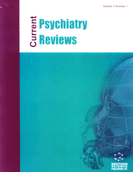Abstract
Over the past half century, most studies investigating the neural substrates of drug addiction have focused on the mesolimbic dopamine reward circuitry. Yet recent evidence suggests a critical role for glutamate neurotransmission in addiction-related behaviors. Glutamate receptors, both ionotropic and metabotropic, are widely expressed throughout the central nervous system. Dissection of the role of individual glutamate receptor subtypes in addictive processes has been aided by the development of pharmacological ligands selective for glutamate receptor subtypes, and by the generation of genetically altered rodents in which the gene encoding an individual glutamate receptor protein or receptor subunit has been deleted or altered. A pivotal study identifying a specific role for the type 5 metabotropic glutamate receptor (mGlu5) in drug addiction was published in 2001 by Chiamulera and colleagues. These investigators demonstrated that mice lacking functional mGlu5 receptors failed to self-administer cocaine and did not exhibit cocaine-induced hyperlocomotion, while food seeking behavior remained unaltered. These findings, and a subsequent flurry of other animal studies utilizing selective mGlu5 antagonists, have confirmed that inhibition of mGlu5 receptor function reduces drug self-administration and/or other behaviors induced by abused drugs including cocaine, amphetamine, nicotine, and alcohol. In this paper these preclinical studies demonstrating a clear role for mGlu5 receptors in drug addiction are reviewed. Summaries of the neuroanatomical distribution, pharmacology and neurotransmitter release-altering properties of mGlu5 receptors are also given. From this review, it is clear that additional studies are needed to determine (1) the efficacy of mGlu5 antagonists in reducing selfadministration of all drugs of abuse, (2) neuroanatomical loci and neurochemical mechanisms by which mGlu5 regulate addictive behaviors, (3) the efficacy of mGlu5 antagonists in various models of craving and relapse, and (4) the ability of mGlu5 antagonists to alter various forms of neuronal plasticity associated with acute or chronic drug exposure. Such studies will hopefully prove a basis for developing novel mGlu5-based pharmacotherapies to aid in the treatment of drug addiction in humans.
Keywords: metabotropic glutamate receptor, mglu, nicotine, cocaine, amphetamine, morphine, alcohol, rodent models, selfadministration, conditioned place preference
 3
3



